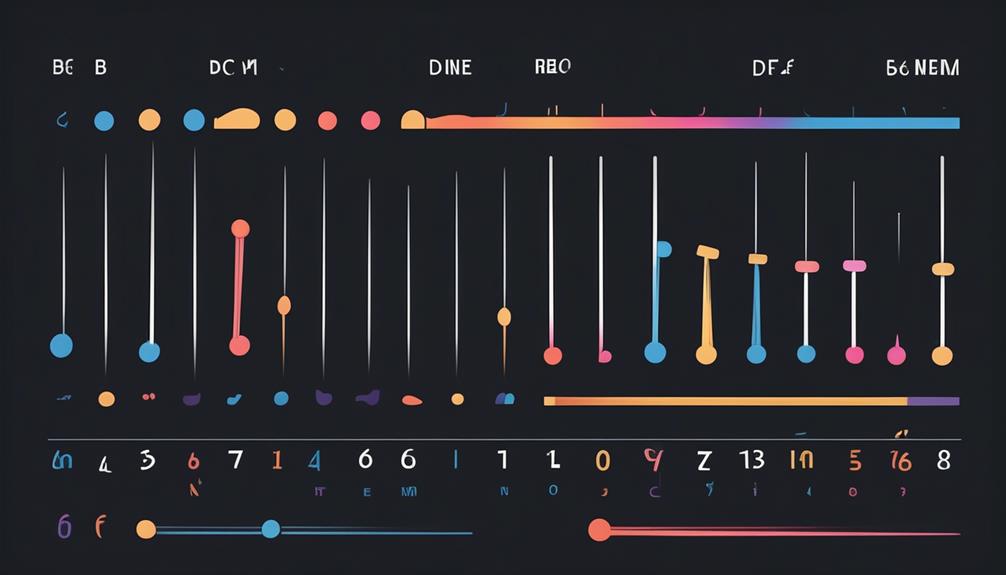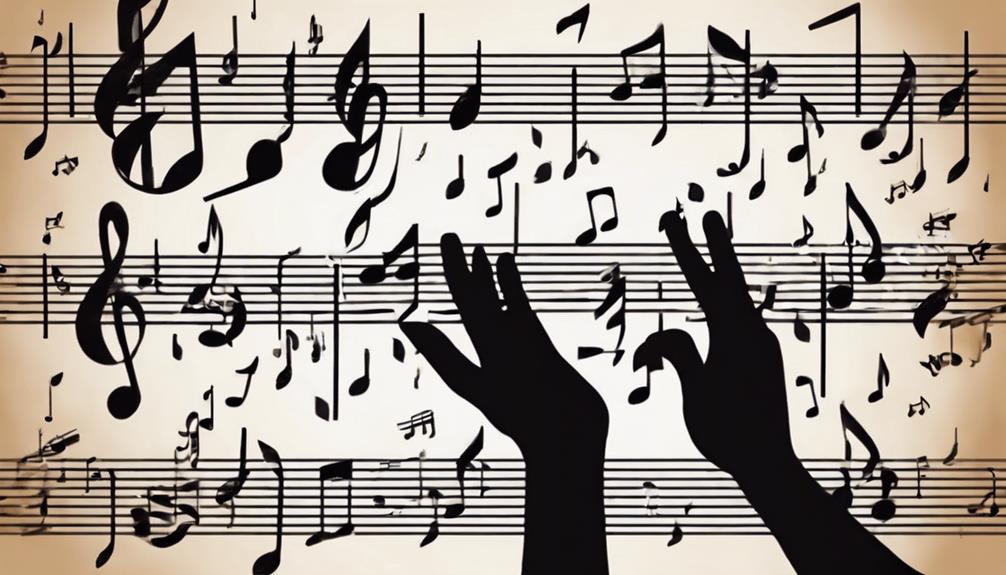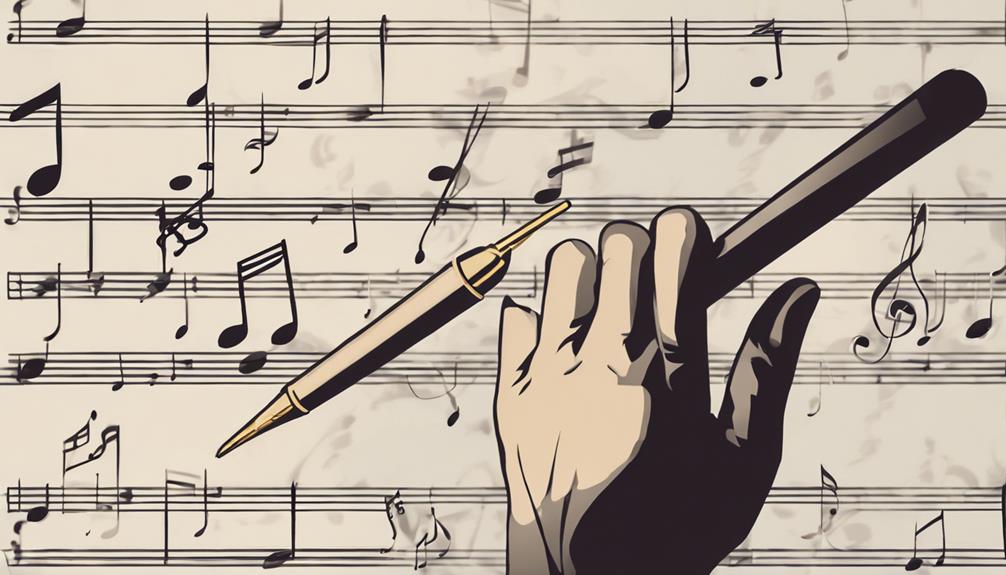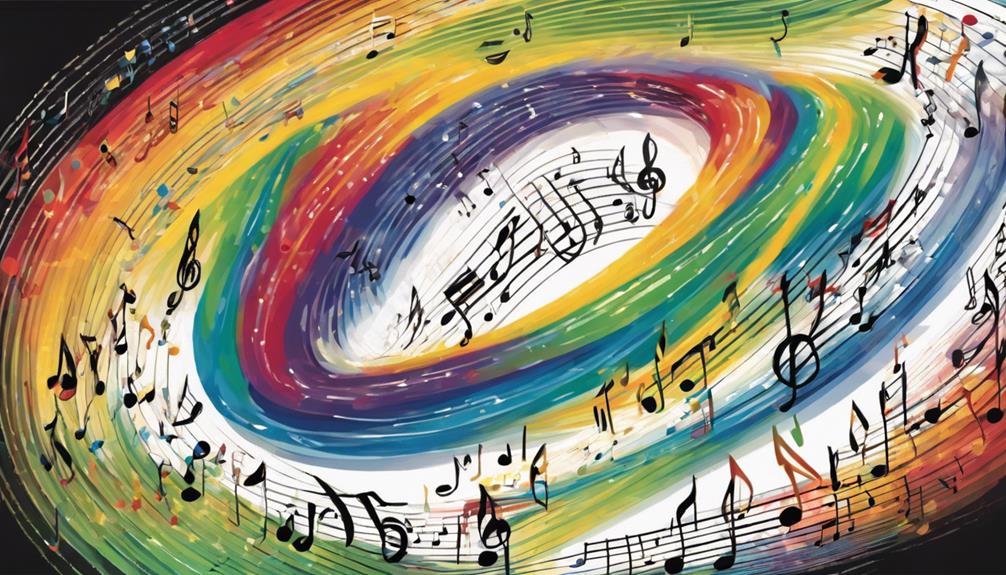No products in the cart.
As you sit down to compose, think of music notation as the map that guides musicians through the landscape of your creativity. You’re about to embark on a journey where understanding the essentials of sheet music is as crucial as knowing the rules of the road when driving.
The symbols and lines on a piece of sheet music aren’t just dots and dashes; they’re the alphabet of a language that enables you to translate your musical thoughts into a form that others can interpret and play. Let’s start with the staff, the five lines and four spaces that are the canvas for your musical masterpiece. Grasping the basics of note placement and rhythm will equip you with the tools to convey the speed, emotion, and intensity of your work.
But before you dive into writing your next hit, you should know there are a few more signposts to understand—key signatures and scales that give your music its unique flavor and color. Stick with me, and you’ll not only learn how to navigate these symbols with ease, but you’ll also discover how to apply them practically in your music production endeavors, ensuring that your ideas are communicated clearly and your compositions resonate with the intended audiences.
Contents
hide
Key Takeaways
- The staff consists of 5 lines and 4 spaces, with each representing a distinct musical note.
- Clefs, like treble and bass, define the pitch of each line and space.
- Note duration and rhythm are determined by note values and time signatures.
- Key signatures and scales play a crucial role in understanding and applying music notation.
Understanding the Staff
The musical staff, composed of 5 horizontal lines and 4 intervening spaces, serves as the foundation for noting pitch in written music. Each line and space represents a distinct musical note, a core concept in reading sheet music. The clefs, such as the treble and bass, are pivotal in identifying musical symbols by defining the pitch of each line and space.
You’ll encounter notes with varying elements: a note head, a stem, and occasionally, a flag. Their positions on the staff are crucial, as they determine the pitch of the notes you’ll play or sing. Accidentals, including sharps and flats, are vital modifiers that adjust a note’s pitch within a measure. When notes extend beyond the staff’s range, ledger lines come into play, allowing for the notation of higher or lower pitches.
As you delve deeper, you’ll grasp other symbols essential for articulating rhythm and timing, such as rests and dotted notes. This intricate system of notations enables the precise communication of musical ideas, a cornerstone for innovation in music production and performance. Understanding the staff is your first step into the expansive world of music notation.
Reading Music Notes
To successfully read music notes, you must first become proficient with the various symbols that represent the sounds and rhythms of a composition. Grasping the staff, clefs, and note values is essential as you delve into interpreting musical pieces. Sight reading techniques hinge on your ability to quickly identify these elements and understand their sequential flow.
Transposing music notes is another skill that requires a strong foundation in reading music. It involves changing the pitch of a composition to suit different voices or instruments. As you advance, you’ll learn to transpose on sight, a skill that’s indispensable for innovative musicians who work across various keys and genres.
Here’s a table to evoke the emotions tied to key musical elements:
| Symbol | Emotion |
|---|---|
| Sharp (♯) | Tension |
| Flat (♭) | Softness |
| Natural (♮) | Resolution |
| Crescendo | Excitement |
| Diminuendo | Calmness |
Mastering ledger lines extends your reading beyond the basic staff, opening up a full spectrum of pitch possibilities. Dedicate time to understanding accidentals and their context within measures to accurately render the intended sound. Keep expanding your knowledge with rests, dotted notes, and other musical symbols to ensure a comprehensive understanding of the musical language.
Grasping Note Durations

Understanding note durations is fundamental to performing music accurately, as it dictates the rhythm and pace of the piece you’re interpreting. Note durations are the building blocks of rhythm, and grasping them means differentiating between various note values such as whole notes, half notes, quarter notes, and eighth notes, each symbolizing a specific length of time that a note is played or held.
To excel in music production, you must also comprehend rests, which indicate silence for a duration parallel to their note counterparts. This knowledge is pivotal for creating dynamic and engaging compositions that resonate with listeners.
Time signatures are another critical aspect, as they frame the context in which you interpret note durations. They guide you on how many beats are in a measure and what note value is assigned to one beat.
Counting rhythms is a practical technique to master note durations. By practicing counting out loud or clapping along to a metronome, you can internalize the timing of different notes and rests. This hands-on approach facilitates a deeper understanding of timing and pacing in music, allowing for more innovative and technically accurate performances and compositions.
Key Signatures and Scales
Building on your grasp of note durations, you’ll now explore how key signatures and scales provide a framework for melodies and harmonies in music composition.
Key signatures are crucial; they define the set of sharps or flats in a piece, streamlining the notation and giving performers immediate context. Scales, constructed from a sequence of whole and half steps, serve as the foundation for your musical ideas.
Dive into the Circle of Fifths to understand relationships between keys and simplify modulation in your compositions. It’s a visual aid that helps you quickly determine key signatures and their relative minors. Moreover, familiarizing yourself with the major and minor scales will bolster your ability to craft compelling melodies and harmonies.
Innovate by experimenting with modes and modal scales, which offer alternative tonalities and moods. These scales aren’t just historical artifacts; they’re tools for modern composers seeking fresh sounds.
Consider these key points:
- Key signatures set the tonal stage for compositions.
- Scales are the building blocks for melody and harmony.
- The Circle of Fifths clarifies key relationships.
- Major and minor scales have distinct step patterns.
- Modes and modal scales open doors to creative possibilities.
Understanding these elements isn’t just about following rules—it’s about pushing boundaries and discovering your unique voice in the symphony of music creators.
Frequently Asked Questions
What Are the Four Steps in Producing Music?
You’ll start producing music by crafting a base melody or beat, then layer instruments for depth, mix tracks for balance, and master the final sound to ensure cohesiveness and a polished finish.
What Four Music Basics Are Used to Make Music?
You’ll use staff notation, rhythm patterns, harmony, and melody to create innovative music. Mastering these elements is crucial for pushing boundaries in your production work. Keep exploring, and you’ll craft groundbreaking sounds.
How Can a Beginner Learn Music Production?
To learn music production, you’ll need to embrace creative experimentation and master your gear essentials. Start by practicing with your DAW, learning mixing techniques, and recording various sounds to refine your skills.
What Are the 5 Stages of Music Production?
You’ll navigate five production phases: pre-production, recording, editing, mixing, and mastering, optimizing your workflow for innovative results in music creation. Each stage is crucial for a polished, professional sound.
Conclusion
Now you’ve got the essentials to tackle music notation. Remember, the staff is your canvas, and notes are your paint. Understand those symbols and rhythms—they’re the heartbeat of your compositions.
Don’t overlook key signatures; they’ll guide your melodies and harmonies. Keep practicing with your preferred tools, and soon you’ll be fluent in this universal musical language.
Dive in, start creating, and watch your production skills soar.




